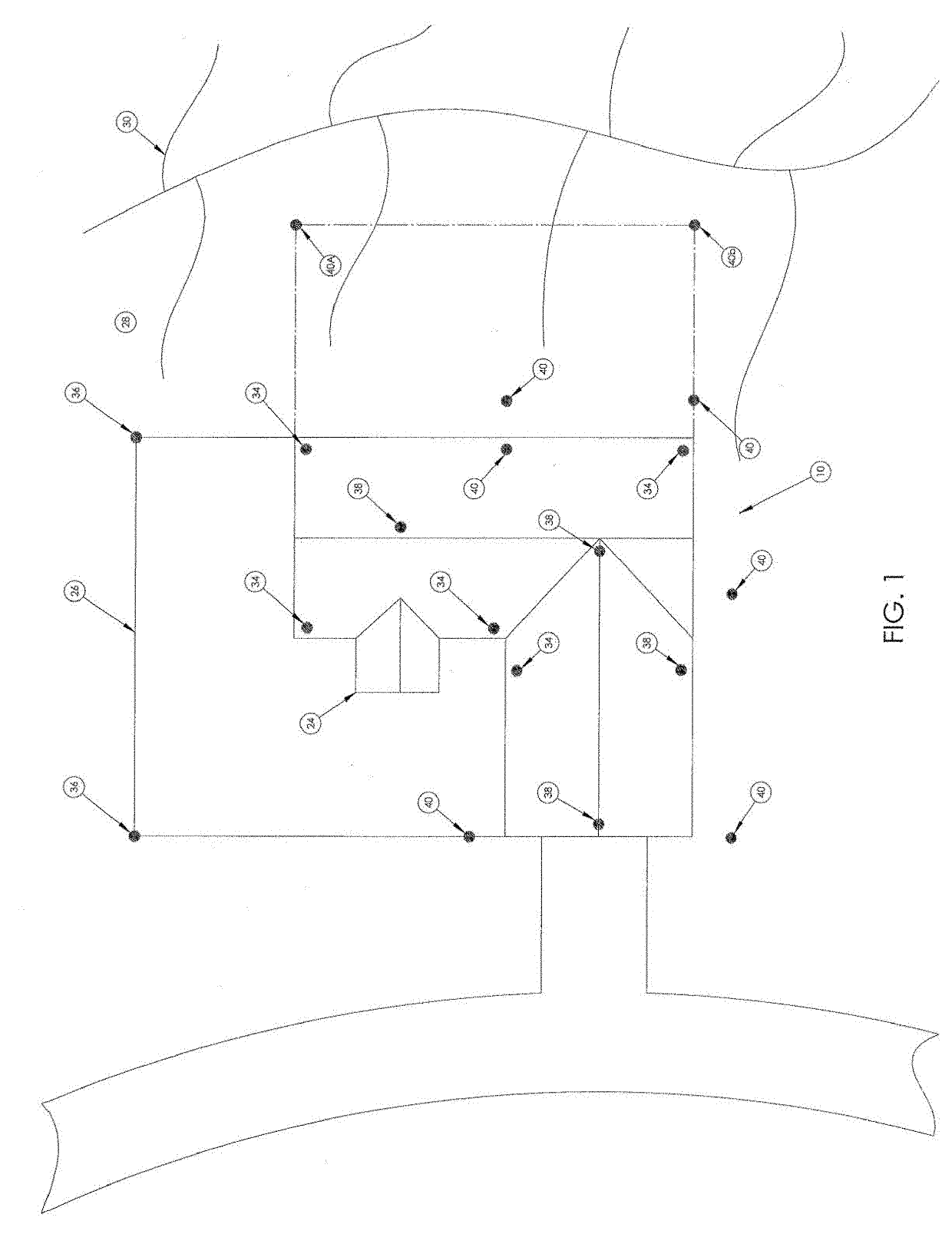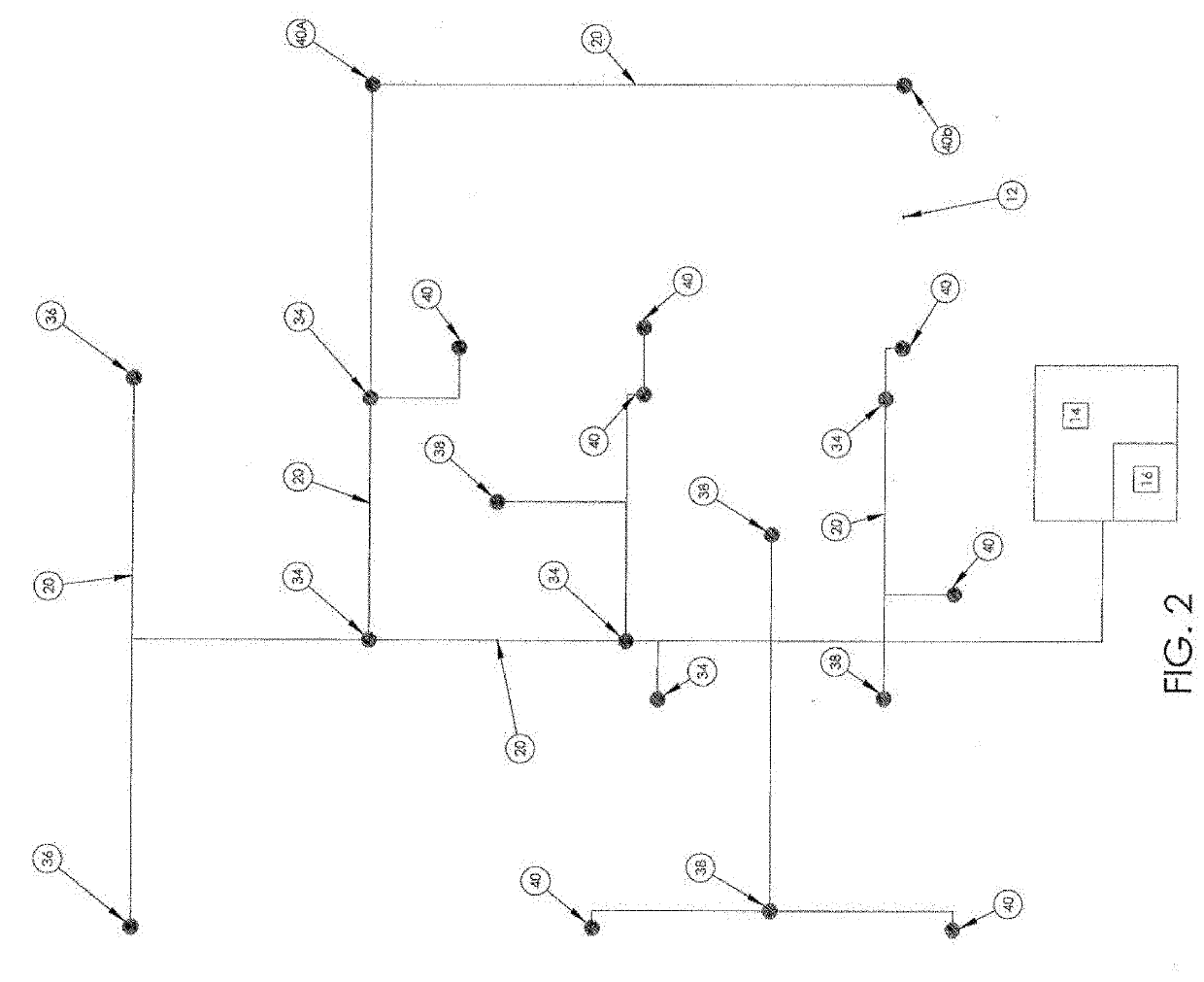Automated wildfire prevention and protection system for dwellings, buildings, structures and property
a technology for protecting systems and dwellings, applied in fire rescue and other directions, can solve the problems of increasing the number of homes and other structures at risk, the deadliest and most destructive wildfire on record in california, and the increase in the number of dwellings, buildings, structures and properties at risk
- Summary
- Abstract
- Description
- Claims
- Application Information
AI Technical Summary
Benefits of technology
Problems solved by technology
Method used
Image
Examples
Embodiment Construction
[0017]One or more techniques may protect a structure from fire. The structure may include a fire suppression system configured to protect the structure and / or a desired area around the structure from the fire. One or more techniques may include determining that the desired area is threatened by the fire based upon one or more factors. One or more techniques may include activating the fire suppression system from an activation location, perhaps for example remote from the wildfire suppression system.
[0018]One or more techniques may protect a structure from fire. The structure may include a fire suppression system configured to protect the structure from the fire. One or more techniques may include monitoring a water supply pressure of the fire suppression system. One or more techniques may include monitoring a water supply flow of the fire suppression system. One or more techniques may include determining that a fire suppression system demand exceeds a threshold, perhaps for example ...
PUM
 Login to View More
Login to View More Abstract
Description
Claims
Application Information
 Login to View More
Login to View More - R&D
- Intellectual Property
- Life Sciences
- Materials
- Tech Scout
- Unparalleled Data Quality
- Higher Quality Content
- 60% Fewer Hallucinations
Browse by: Latest US Patents, China's latest patents, Technical Efficacy Thesaurus, Application Domain, Technology Topic, Popular Technical Reports.
© 2025 PatSnap. All rights reserved.Legal|Privacy policy|Modern Slavery Act Transparency Statement|Sitemap|About US| Contact US: help@patsnap.com



